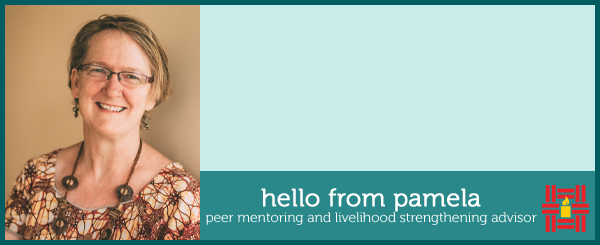October 6, 2016
Over the past few months, the Scholarship team at TFFT have been involved in the intricate process of identifying new scholars for our program in 2017. We have spent days on the road visiting villages, going to local schools in Arusha and neighboring areas, talking to teachers, and following up on applications from local NGOs, all in an effort to identify the most vulnerable children who will receive the lifeline of a sponsored education.
Before we commenced on the identification of new scholars, Stephen and I sat down to capture in a flow diagram the process involved in a new intake of students. It was complex! We need to ensure we are seen and be transparent, accountable, fair, balanced, and able to justify in an objective way, all our decisions. We need to hear as many voices as possible, use valid measuring tools of poverty, remove bias, and ensure all the information we gather has been verified. It sounds very objective, but as I learned, this is also a very emotional process for everyone involved!
During our travels for the identification process, our team has engaged in interesting ongoing discussions. What does being a “most vulnerable child” actually entail? What vulnerability makes one child more at risk than another? Which child in a family should be put forward for the program? What geographical area should our scholars come from? Are female children more intrinsically vulnerable than a male children? At what age is it best to join the TFFT scholarship program? These questions have drawn many informative conversations, and as TFFT’s Scholarship Program matures, many of the answers can be found within our history. For present purposes, our team maintained an objective process by filling in poverty surveys and gathering verified information from different sources.
There have been some meetings in the community that have remained upper-most in my mind. One is the time I met young children in the care of poor-health grandparents who have taken on responsibility for their grandchildren after their own children have passed away. In some circumstances, the only way they could cope would be through assistance from compassionate neighbors. These families survive as best as they can, and often you can see the love and strong connections between the generations. Other most vulnerable homes are about adults not coping for various reasons. We visited homes where the main caretaker is physically ill, or sole guardian unable to etch a reasonable livelihood ,or where support systems have broken down. We have visited homes where the environment is desolate or isolated from economic activity on barely fertile land. We have come across many people who want the best for their children.
Our team is currently summarizing all the information we have gathered into databases for the next stage of the identification process. This includes a selection panel with external professionals experienced in child protection issues.
Seeing Tanzania’s most vulnerable children firsthand has been a great eye opener for me. I have a better understanding of the all-encompassing impact of TFFT on our scholars’ lives. TFFT Scholars are no longer vulnerable, and have the life-long safety net of a good education. They are privileged. They live the lives all children in Tanzania should live. I have seen vividly the contrast between where our scholars come from and where our scholars are now. This is so very encouraging. All of you involved in TFFT’s work should be very proud. When we measure “progress” of our scholars, we have to keep in mind how far they have come. We need to keep in mind that our scholars have started quite a distance behind the starting line and are all certainly brave souls.






